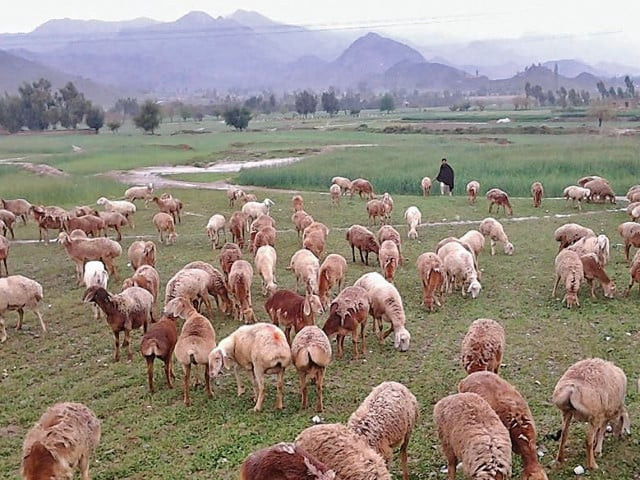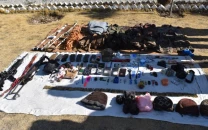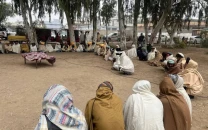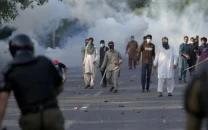Climate change renders Halimzai barren
Water level has dropped so low that agriculture has become impossible in parts of Mohmand

Where irrigation has flourished in some parts of the Mohmand tribal district in Khyber-Pakhtunkhwa (K-P), tehsil Halimzai has become drier in the past few decades, forcing thousands of families to move to other parts of the country in search of greener pastures.
Mohmand is one of the poorest tribal districts in K-P along with Bajaur, with completely different geography.
Mohmand, with a few exceptions, is a barren land and rocky desert where no drinking water could be found, let alone irrigation water.
As a result irrigation is traditionally non-existent here.
With the introduction of tube wells in 1980s, agriculture flourished for the first time in the history of the district but since 2010 climate change has left the Halimzai valley barren once again.
Mohmand is a large water-less expanse where the main source of income for the locals was collecting tax on the trade goods in the ancient times as a road connecting Silk Road with India passed through Mohmand hills.
With the end of caravan trade and Silk Road, the entire area was left destitute so there is a long tradition of Mohmand tribesmen migrating to other parts of the province to work as crop-sharers, daily wage earners and doing other meager jobs.
“I had a small but successful farming in Sultan Khel, Halimzai.
Life was busy and tough but peaceful.
I earned enough to feed my family comfortably,” said Sodargar Khan while talking to The Express Tribune.
“In 2006 I installed a water pump on my two acres of land and started cultivating vegetables.
My children started going to school as well and there was enough grain to feed the family and vegetables were sold on the market,” he observed, adding that in 2010, a flood washed away his entire crop of onions and the water level in the following years dropped to a level that irrigation became almost impossible.
“There was no drinking water what to speak of watering the fields and trees.
So these days I go to Ghalanai each day to search for small jobs and earn a few pennies for my family.
I am unable to arrange two square meals for my family anymore,” he maintained, saying that it was the story of all farmers in his village.
Most of them packed for other cities like Peshawar, Lahore, Islamabad and Karachi.
Another farmer said that in the past when their tube wells were able to supply ample water for irrigation, they had livestock.
As a result there was no shortage of meat and dairy products but all those things are now history.
Mohmand Director Agriculture, Asif Iqbal said that Halimzai was a largely agri district in the past but around 15 years ago it ended abruptly due to drought and climate change.
“The underground water sunk deeper and deeper and women and children are among the worst hit,” he said.
The head of Mohmand Farmers Association, Gulab Sher Mohmand said that the drop in underground water level in Halimzai was the main factor in the disappearance of agi farming in the area.
He demanded small dams.



















COMMENTS
Comments are moderated and generally will be posted if they are on-topic and not abusive.
For more information, please see our Comments FAQ